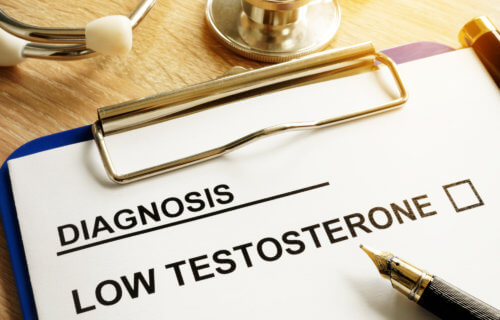ANN ARBOR, Mich. — It’s time to redefine what it means to have low testosterone, researchers from the University of Michigan argue. Their study suggests the “one-size-fits-all” approach does not work for men in their mid-40s or younger. It could also help those who have low testosterone levels but do not qualify for insurance coverage of hormone therapy because they don’t meet the standard cutoff for what’s “low.”
“Young men have different testosterone reference ranges than older men,” says lead author Alex Zhu in a media release. “Our findings suggest we should be using age-specific cutoffs when assessing testosterone levels in younger men.”
Currently, doctors consider anything below 300 nanograms per deciliter (300 ng/dL) as low testosterone. However, the cutoff point is based on the results of testosterone levels in older men and ignores the natural age-related decline in the male sex hormone.
People with low testosterone levels generally receive a diagnosis of having a testosterone deficiency. This could contribute to a low sex drive and erectile dysfunction. Testosterone deficiency is a common issue among older men, but urologists have noticed a worrying trend, with younger men now at risk for testosterone deficiency. These men exhibit other symptoms such as low energy and fatigue.
The authors argue a more accurate reading would involve age-specific cutoff points. In the study, researchers gathered data on nearly 1,500 men between 20 and 44 from a separate nationwide health survey. They excluded data from men engaging in hormone therapy or those with a history of testicular cancer or testicular removal. Since testosterone levels fluctuate throughout the day, they only looked at levels during the daytime.
The team also separated adults into five-year age groups. The middle third of testosterone levels in each age group established the “normal” range, with values below that being “low.” The team found, as expected, lower testosterone levels when looking at older versus younger men. In men between 20 to 24, the cutoff for low testosterone was 409 ng/dL. The cutoff was 350 ng/dL for men between 40 and 44. Every year after, the average man experienced a 4.3 ng/dL decrease in testosterone levels.
According to the study authors, the findings are the first to assess testosterone levels in young men across the United States and reflect the racial and ethnic diversity of the population. It also did not exclude men with other health conditions beyond testicular removal or testicular cancer.
“In today’s age of personalized medicine, clinicians can now use age-specific testosterone levels to evaluate young men instead of relying on a ‘one size fits all’ approach,” Dr. Zhu and the co-authors write.
The study is published in The Journal of Urology.


This is new? We’ve known this for decades. It’s first semester A&P.